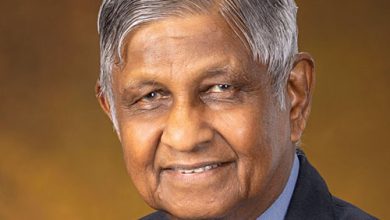Compiled by Tamara Rebeira
BLUEPRINT FOR THE FUTURE
Suresh Murugaser expounds on what it will take to up the ante in tourism

Q: How would you position Sri Lanka as a competitive market for tourism to attract both domestic and international guests?
A: Sri Lanka has been positioned as a ‘sun and sea’ (S&S) destination since the mid-1960s, which is how we gained popularity as a repeat destination for Europeans. With the likes of the Maldives, Phuket, Bali, Penang and Goa opening up, we’ve unfortunately lost that uniqueness.
We have wisely chosen to go with S&S along with added attractions and scenery ranging from mountains, plains, deserts and jungles to wildlife, and flora and fauna.
Sri Lanka also boasts ruins, landscapes, agricultural water bodies, handicrafts, arts, sports, fashion, cuisine and five-star hotels among others.
Compactness has led Sri Lanka to become the destination that it is today. No other island of its size can deliver all these experiences collectively.
Q: Sri Lanka has been gaining popularity as a travel destination. How should the hospitality sector change its approach to be in sync with this development?
A: Today, a tourist’s emphasis is on the experience and activities available.
Over the past 15 years, intrepid new generation entrepreneurs have developed exceptional boutique hotels, target marketed them and succeeded in putting Sri Lanka on the luxury holiday map. More international hotel chains should enter the country – and this should spread to the north as well. This will raise the country’s profile significantly.
We urgently need to address the question of training and retaining staff – this is our single biggest challenge at present. Local hotels are unable to pay competitive salaries like those in Middle Eastern countries.
Therefore, the government and hospitality sector as a whole must address this disparity to discourage migration.
Q: In your view, how important is it to use digital marketing channels such as social media to reach a broader audience that’s interested in visiting Sri Lanka?
A: You’re a dead duck without digital marketing in this day and age. Audiovisual presentations are the most powerful tool. A product can be segregated to suit various special interests and pitched to selected target markets.
Digital media is also a cost-effective method; it doesn’t require expenditure on physical promotions, trade fairs and exhibitions as in the past though they can continue to take place.
In the end, it’s the number of people you reach that matters.
Q: What trends do you anticipate in the hotel sector’s sales and marketing landscape in the coming years?
A: There’ll be more emphasis on digital marketing (business to consumer) and MICE (meetings, incentives, conferences and exhibitions), interspersed with person-to-person contact, as tourism and hospitality are based on personal relationships to a great extent.
More visits to Sri Lanka by foreign media, writers, TV and film crews, and the resultant publicity will play a pivotal role in popularising the country. The Sri Lanka Tourism Promotion Bureau (SLTPB) and SriLankan Airlines must be the prime drivers of such efforts.
There has been a shift in marketing to locals, which is positive. In the prevailing climate, not many can afford high prices while some others can. Value added packaged holidays are attractive to locals and electronic media can be utilised to promote offers, negating the need for hotels to employ large sales teams.
Q: Could you share a few insights into the challenges and opportunities facing the local tourism industry at present?
A: Properties of high quality and standards must be introduced in the north and east, while the Bandaranaike International Airport (BIA) and all other airports – especially the Jaffna International Airport – must be upgraded.
Sri Lanka must also have an open skies policy to attract as many direct flights as possible. Meanwhile, internal flights should be increased. Train journeys must be speedy, improved and made comfortable, and luxury coaches should be used for longer journeys.
Tourist attractions must be upgraded with better access – including improved sanitary facilities, shops and so on – and more tourist police posts should be established to combat issues faced by foreigners.
Another key issue that needs addressing is our hotel rate structures. Since 1 October, the government has enforced a minimum selling rate on accommodation and meals. But when the service charge, VAT and nation building tax (NBT) are included, we become highly uncompetitive in comparison to neighbouring destinations.
The condition of vehicles in the tourism industry must also be addressed, which has been aggravated by the government imposed import ban.
Reputed fleet owners should be granted incentives to import electric vehicles, which will reinforce the country’s commitment to tackling climate change and adopting renewable energy.
And the biggest drawback is the lack of consistent promotional activities.
A US$ 4.3 million campaign is due to be launched to promote tourism. This is woefully inadequate if we’re attempting to generate revenue amounting to two billion dollars by 2024. A minimum of US$ 10 million must be allocated for this purpose.





